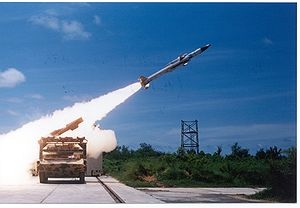Army inducts indigenous Akash to thwart aerial attacks
05 May 2015
India today inducted an indigenously developed anti-aircraft missile system with the handing over of the surface-to-air missile (SAM) Akash to the Indian Army, adding some muscle to the country's defence against aerial threats.
The air defence weapons system will help prevent aerial threats from enemy air asets including drones and unmanned aerial vehicles up to a maximum range of 25km and up to an altitude of 20km, an official release said.
Developed by the Defence Research and Development Laboratory of the Defence Research and Development Organisation (DRDO), Akash can be fired from both static and mobile platforms. It offers an all weather air defence weapon system for defending vulnerable areas against medium range air targets penetrating from low, medium and high altitudes.
The missile system can evaluate and track threats and fire missiles on the basis of information obtained by the radar systems. The Army will be getting two Akash regiments over a period of the next two years.
The system is capable of simultaneously engaging multiple targets and can provide comprehensive short range missile cover to the Army ground forces. (See: India successfully tests Akash missile after initial failure)
"The core of Army Air Defence is responsible to provide air defence cover to the allotted vulnerable assets. Akash weapon system is a state of the art short range, surface to air missile system. The teeth of the system are the supersonic rocket ramjet missile. This missile has a range from 3 to 25 km. It has an altitude from as low as 30 metres going up to 20 km. It flies several macs, up to 2.5 mac."
"If you fire two missiles in a ripple it produces a single shot k - capability of 98 per cent, we have a 3D central acquisition radar which looks far beyond up to 120km. As the target comes near, we have the state-of-the-art face tracking radar that tracks the target, and the systems which control the missile precisely. Our regiment has 6 fire units, each fire unit has 4 Akaash launchers, each with three ready to fire missiles, so a lot of fire power goes along with each fire unit," Director General of Army Air Defence (DGAAD) Lt General VK Saxena said.
The missile system, indigenously developed as part of the integrated guided-missile development programme (IGMDP), will replace Russian weaponry some of which have been with the Army for almost 50 years and are obsolete.
The system is being inducted into the Indian Army after a long wait of 32 years. DRDO has been working on it since 1983.













.jpg)






.jpg)









